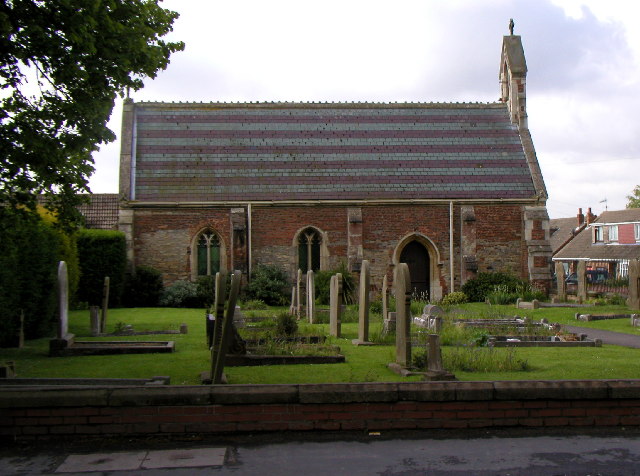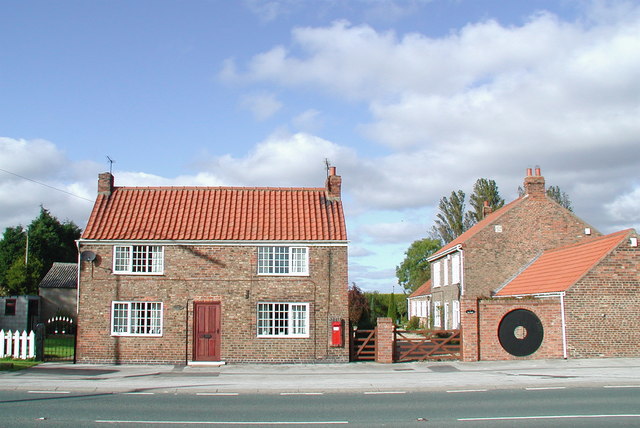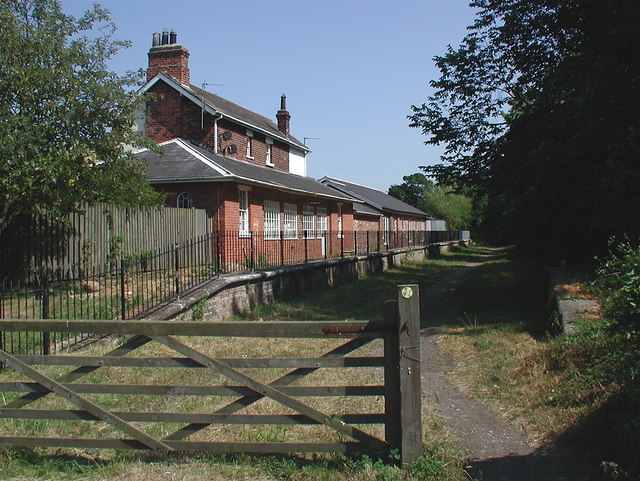|
Thorngumbald
Thorngumbald is a village and civil parish in the East Riding of Yorkshire, England, in an area known as Holderness, east of Hull on the A1033. The civil parish is formed by the village and the hamlets of Camerton and Ryehill. At the 2011 census, it had a population of 3,392, an increase on the 2001 UK census figure of 3,106. History Thorngumbald was once a Viking settlement – the official emblem of Thorngumbald is a Viking helmet with wings. The name was first recorded in the ''Domesday Book'' as "Torn", an Old English word meaning 'thorn bush'. The name was still in use in 1228, but by 1260 it had become "Thorne". In the lay subsidy rolls of Edward 1, 1297, it is given as Thorengumbald. A Baron Gumbaud had settled in the area, adding his name to the original and giving the village its present name. The Gumbaud name was associated with the local Lord of the manor in the 13th century. By the 17th century the village had had different spellings, including Thorgumbaud, ... [...More Info...] [...Related Items...] OR: [Wikipedia] [Google] [Baidu] |
Thorngumbald Church
Thorngumbald is a village and civil parish in the East Riding of Yorkshire, England, in an area known as Holderness, east of Hull on the A1033. The civil parish is formed by the village and the hamlets of Camerton and Ryehill. At the 2011 census, it had a population of 3,392, an increase on the 2001 UK census figure of 3,106. History Thorngumbald was once a Viking settlement – the official emblem of Thorngumbald is a Viking helmet with wings. The name was first recorded in the ''Domesday Book'' as "Torn", an Old English word meaning 'thorn bush'. The name was still in use in 1228, but by 1260 it had become "Thorne". In the lay subsidy rolls of Edward 1, 1297, it is given as Thorengumbald. A Baron Gumbaud had settled in the area, adding his name to the original and giving the village its present name. The Gumbaud name was associated with the local Lord of the manor in the 13th century. By the 17th century the village had had different spellings, including Thorgumbaud, ... [...More Info...] [...Related Items...] OR: [Wikipedia] [Google] [Baidu] |
Ryehill, East Riding Of Yorkshire
Ryehill is a hamlet in the East Riding of Yorkshire, England, in an area known as Holderness. It is situated approximately east of Hull city centre and lies just south of the A1033 road, (the main road from Hull to Withernsea). It forms part of the civil parish of Thorngumbald. Ryhill was served from 1854 to 1964 by Burstwick railway station on the Hull and Holderness Railway. The hamlet itself consists of 15 or so houses, and two main lanes that run through the hamlet are Marsh and Pitt Lanes (both of these are 30 mph). Ryehill is mainly known for its award-winning pub, ''The Crooked Billet'' (CAMRA Pub of the Year, 2007). There are not a large number of minors in the hamlet, however those who are present attend Thorngumbald Primary school, usually followed by South Holderness Technology College (a large secondary school on the outskirts of Hedon). The crime rate is almost non-existent in the local area. Ryehill is surrounded by fields and grazing land, but is with ... [...More Info...] [...Related Items...] OR: [Wikipedia] [Google] [Baidu] |
Camerton, East Riding Of Yorkshire
Camerton is a hamlet in the East Riding of Yorkshire, England, in an area known as Holderness. It is situated approximately east of Hull city centre and lies just north of the A1033 road. It forms part of the civil parish of Thorngumbald Thorngumbald is a village and civil parish in the East Riding of Yorkshire, England, in an area known as Holderness, east of Hull on the A1033. The civil parish is formed by the village and the hamlets of Camerton and Ryehill. At the 20 .... References * External links * * Villages in the East Riding of Yorkshire Holderness {{EastRiding-geo-stub ... [...More Info...] [...Related Items...] OR: [Wikipedia] [Google] [Baidu] |
Preston, East Riding Of Yorkshire
Preston is a village and civil parish in the East Riding of Yorkshire, England, in an area known as Holderness. It is situated approximately east of Hull city centre it lies just north of the A1033 road on the crossroads between the B1240 and B1362 roads. The civil parish is formed by the village of Preston and the hamlet of Salt End. According to the 2011 UK census, Preston parish had a population of 3,258, an increase on the 2001 UK census figure of 3,100. The parish church of All Saints is a Grade I listed building. There is both a primary school (Preston Primary School) and a secondary school, which achieved Technology College status in 1997, and has a sixth form facility joined onto the school, in Preston. South Holderness Technology College converted to an academy known as Holderness Academy and serves the surrounding villages of Paull, Hedon, Bilton, Skirlaugh, Keyingham, Thorngumbald, Aldbrough, West Newton, Burton Constable, Sproatley Sproatley is a vil ... [...More Info...] [...Related Items...] OR: [Wikipedia] [Google] [Baidu] |
South Holderness Technology College
Holderness Academy (formerly known as South Holderness Technology College) is a Mixed-sex education, coeducational secondary school and sixth form located in the East Riding of Yorkshire, England. It had previously received extra funding due to its high curricular activity in technology, I.C.T. and science, for which it had been awarded, but no longer has, Technology College status. Previously a Community school (England and Wales), community school administered by East Riding of Yorkshire Council, in October 2018 South Holderness Technology College converted to Academy (English school), academy status and was renamed Holderness Academy. The school is now sponsored by The Consortium Academy Trust. History The origins of the school date back to the middle years of the Second World War and the Beveridge Report. In 1942 the University of Oxford academic William Beveridge was asked to prepare a paper for the government outlining the problems that existed within British society. H ... [...More Info...] [...Related Items...] OR: [Wikipedia] [Google] [Baidu] |
Chris Chilton
Christopher Roy Chilton (25 June 1943 – 20 May 2021) was an English professional footballer who played in the Football League for Hull City and Coventry City. Chilton was born in Sproatley, East Riding of Yorkshire. Chilton played as an inside forward for Church League side Bilton, but after joining Hull City he played at centre forward.Soccer Who's Who compiled by Maurice Golesworth, The Sportsman's Book Club 1965 He is Hull City's all-time top scorer, with 222 goals in all competitions. He was renowned for his partnership with fellow striker Ken Wagstaff, the taller, unselfish Chilton proving to be the perfect foil to the stocky, more predatory Wagstaff. Both players were deemed unlucky not to gain international honours - although both played for an England league XI in representative games. During Hull's 1965-66 successful Division Two promotion campaign Chilton scored 29 goals despite the presence of an egg-sized lump of fat behind a knee. He had an operation in the close ... [...More Info...] [...Related Items...] OR: [Wikipedia] [Google] [Baidu] |
United Kingdom Census 2011
A Census in the United Kingdom, census of the population of the United Kingdom is taken every ten years. The 2011 census was held in all countries of the UK on 27 March 2011. It was the first UK census which could be completed online via the Internet. The Office for National Statistics (ONS) is responsible for the census in England and Wales, the General Register Office for Scotland (GROS) is responsible for the census in Scotland, and the Northern Ireland Statistics and Research Agency (NISRA) is responsible for the census in Northern Ireland. The Office for National Statistics is the executive office of the UK Statistics Authority, a non-ministerial department formed in 2008 and which reports directly to Parliament. ONS is the UK Government's single largest statistical producer of independent statistics on the UK's economy and society, used to assist the planning and allocation of resources, policy-making and decision-making. ONS designs, manages and runs the census in England an ... [...More Info...] [...Related Items...] OR: [Wikipedia] [Google] [Baidu] |
St John Ambulance In England And Wales
St John Ambulance is a volunteer-led, charitable non-governmental organisation dedicated to the teaching and practice of first aid and the support of the national emergency response system in England. Along with St John Ambulance Cymru, St John Ambulance Northern Ireland, and St John Scotland, it is one of four United Kingdom affiliates of the international St John Ambulance movement. The St John Ambulance Association was founded in 1877 to provide first aid training. In 1887, the St John Ambulance Brigade was founded to provide uniformed medics at public events. In 1968, the two were merged into the present foundation. The organisation is a subsidiary of the England and the Islands priory (i.e. branch) of the Order of St John. Until 2012, it also managed St John Ambulance services in the Isle of Man and Channel Islands. History The St John Ambulance Association was set up in 1877 by the Venerable Order of Saint John to teach industrial workers first aid so that they could p ... [...More Info...] [...Related Items...] OR: [Wikipedia] [Google] [Baidu] |
East Yorkshire Motor Services
East Yorkshire operates both local and regional bus services in the East Riding of Yorkshire and North Yorkshire, England. Prior to acquisition by the Go-Ahead Group in June 2018, the company was known as East Yorkshire Motor Services. History East Yorkshire Motor Services was originally made up of two companies, Lee & Beaulah (set up by Ernest John Lee) and Hull & District Motor Services (set up by H.A. Harvey). In October 1926, British Electric Traction purchased the two companies. In 1968, the British Electric Traction group was sold to the Transport Holding Company, which in turn became the National Bus Company in the following year. Until 1972, the company's livery was dark blue with a primrose band, with a white relief band also applied to the roofline of buses. Shortly after East Yorkshire was brought under National Bus Company ownership, the primrose band was changed to white and buses were given NBC corporate fleet names. This proved to be short-lived, with the adapte ... [...More Info...] [...Related Items...] OR: [Wikipedia] [Google] [Baidu] |
Beeching Cuts
The Beeching cuts (also Beeching Axe) was a plan to increase the efficiency of the nationalised British Rail, railway system in Great Britain. The plan was outlined in two reports: ''The Reshaping of British Railways'' (1963) and ''The Development of the Major Railway Trunk Routes'' (1965), written by Richard Beeching and published by the British Railways Board. The first report identified 2,363 stations and of railway line for closure, amounting to 55% of stations, 30% of route miles, and 67,700 British Rail positions, with an objective of stemming the large losses being incurred during a period of increasing competition from road transport and reducing the rail subsidies necessary to keep the network running. The second report identified a small number of major routes for significant investment. The 1963 report also recommended some less well-publicised changes, including a switch to the now-standard practice of containerisation for rail freight, and the replacement of some ... [...More Info...] [...Related Items...] OR: [Wikipedia] [Google] [Baidu] |
Burstwick Railway Station
Rye Hill and Burstwick railway station is a disused railway station on the North Eastern Railway's Hull and Holderness Railway midway between Burstwick and Ryehill in the East Riding of Yorkshire, England. It was opened by the Hull and Holderness Railway The Hull and Holderness Railway was a branch line in the East Riding of Yorkshire, England that connected the city of Kingston upon Hull with the seaside resort of Withernsea via the town of Hedon and the villages of Keyingham and Patrington. ... on 27 June 1854. On 1 July 1881 it was renamed to Rye Hill and on 23 September 1929 changed name again this time to Rye Hill and Burstwick. The station was closed to passengers on 19 October 1964. It is now a private residence. References * * Disused railway stations in the East Riding of Yorkshire Railway stations in Great Britain opened in 1854 Railway stations in Great Britain closed in 1964 Former North Eastern Railway (UK) stations Hull and Holderness Railwa ... [...More Info...] [...Related Items...] OR: [Wikipedia] [Google] [Baidu] |
Hull And Holderness Railway
The Hull and Holderness Railway was a branch line in the East Riding of Yorkshire, England that connected the city of Kingston upon Hull with the seaside resort of Withernsea via the town of Hedon and the villages of Keyingham and Patrington. History Background An early proposal for a railway eastwards from Hull into Holderness was made in 1845 by the York and North Midland Railway for a line from a junction on a line to the east Dock ( Victoria Dock) at Drypool to Patrington via Hedon; the Patrington line was not included in the resultant acts of 1846. A second attempt at a line was promoted by Hull businessman Anthony Bannister, with the intention of linking Hull with the rich agricultural area of South Holderness, and the development of a coastal village (Withernsea) into a new seaside resort. The silting up of Patrington and Hedon Havens was another incentive for the construction of a line, since it could no longer be used for transportation by water. A prospectus was is ... [...More Info...] [...Related Items...] OR: [Wikipedia] [Google] [Baidu] |




.jpg)

